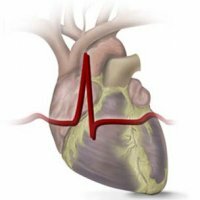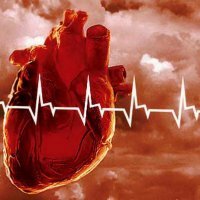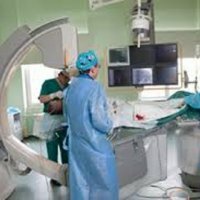Chronic heart failure

The absence of treatment for many heart diseases leads to the development of chronic heart failure. This condition is characterized by the fact that the heart can not cope with the task of pumping blood in the required volume, because of which the organs and tissues of the body begin to lack nutrients and oxygen.
Symptoms and stages of the disease
The main symptoms of this condition are swelling and shortness of breath. The appearance of edema is associated with stagnation of blood in the veins. Dyspnoea is the result of blood stagnation in the vessels of the lungs, and also because of the increased need for oxygen.
The state of insufficiency develops gradually, and therefore there are several stages of this ailment. There are different classification stages, while the most understandable and convenient is the one that was developed by the heart association of New York. This classification implies the allocation of four categories of patients( functional classes).
I FC: at this stage the patient does not have any obvious signs of the disease, so there are no limitations in physical activity. Loads do not cause increased heart rate, weakness, dyspnea, or anginal pain.
II FC: there are small restrictions on physical activity. It is best for the patient to feel at rest, and performing the simplest workloads leads to shortness of breath and weakness, increased heart rate and anginal pain.
III FC: there is a clear limitation of physical activity. The patient is good only at rest and even a small load leads to increased heart rate, the development of faintness, the appearance of anginal pain and shortness of breath.
IV FC: the stage is characterized by the inability to carry out any load without compromising comfort. In this case, angina pectoris and signs of the disease appear even at rest. A small load leads to an increase in discomfort.
Pathogenesis of
In case of inability to circulate sufficiently, oxygen starvation of tissues and organs occurs, which leads to the appearance of the usual symptom of the disease - dyspnea( at rest or under physical exertion).Thus the person can complain of a bad dream, excessive and fast fatigue, the raised palpitation( a tachycardia).
Lack of oxygen also leads to the fact that the skin in the areas remote from the heart( fingers and toes, lips) acquires a gray-bluish hue( cyanosis).Violations in the work of the heart, in addition to lack of volume of blood entering the arterial bed, leads to stagnation of blood in the veins. This leads to the appearance of edema( usually in the lower limbs).In addition, pain in the right upper quadrant, which arise from overflow of the veins of the liver, may appear.
The severe stage of the disease is characterized by more pronounced aforementioned manifestations. Dyspnea and cyanosis occur in a person even in a state of rest. The person is forced to spend most of the time in the sitting position, because in the lying position, dyspnea increases. Even to sleep sometimes a person can only sit. Edema occurs not only in the legs, but in the entire lower body. In addition, fluid stagnation occurs in the pleural and abdominal cavities.
Diagnostics
Diagnosis involves examining a cardiologist and conducting a series of examinations: an electrocardiogram in different versions( treadmill test, daily monitoring of the electrocardiogram).The size and contractility of the cardiac muscle departments, the volume ejected into the aorta of blood allows you to recognize the echocardiogram. Also, sometimes cardiac catheterization is performed. This procedure consists in the introduction of a thin tube into the heart through a vein or artery. The catheterization is necessary for measuring the pressure in the heart chambers, as well as for determining the place of obstruction of the vessels.
Treatment of
The goal of therapeutic measures for heart failure is to eliminate the cause that caused the development of chronic insufficiency. Also, the correction of disorders that are characteristic for each stage of the disease is performed. There are medicinal and non-medicinal methods of treatment( diet, restriction of mental and physical activity).In this case, preparations of different mechanisms of action are used.



